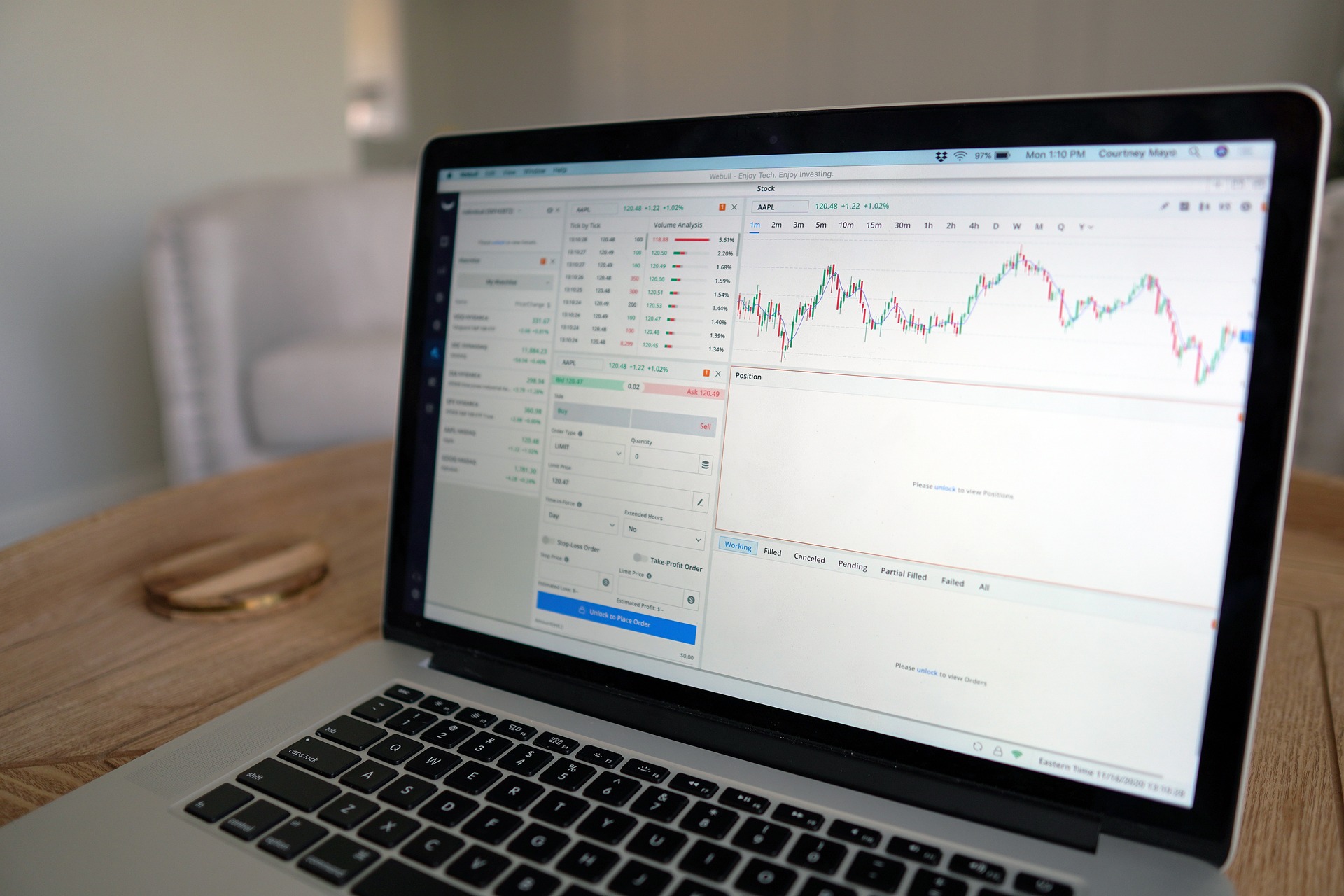In the dynamic landscape of financial markets, the advent of algorithmic trading has ushered in a new era, reshaping the very foundations of investment strategies. At the forefront of this transformative wave is the integration of Artificial Intelligence (AI) into trading platforms, heralding unprecedented levels of efficiency and sophistication. As investors seek to navigate the complexities of today’s markets, the role of AI in shaping the future of investments cannot be overstated. This article delves into the compelling evolution of algorithmic trading and its symbiotic relationship with AI, exploring how cutting-edge technologies, such as those offered by MTrading at https://mtrading.com/, are revolutionizing the way financial decisions are made and paving the way for a more intelligent and responsive investment landscape.
The Role of AI in Algorithmic Trading.
Artificial Intelligence (AI) plays a pivotal role in algorithmic trading, transforming the way financial markets operate. With AI algorithms, traders can leverage sophisticated techniques to analyze market data and make informed decisions in real-time.
One key aspect of AI in algorithmic trading is its ability to process vast amounts of data at incredible speeds. This enables algorithms to identify patterns and trends that may not be apparent to human traders, giving them a competitive edge in the market.
Moreover, AI algorithms can adapt to changing market conditions, continuously learning and improving their trading strategies over time. This adaptive nature allows algorithms to remain effective even in volatile market environments, mitigating risks and maximizing returns for investors.
Overall, AI has revolutionized algorithmic trading by enhancing speed, accuracy, and adaptability. As technology continues to advance, we can expect AI to play an increasingly significant role in shaping the future of investments.
Automation in Trading
Automation in trading, facilitated by algorithmic strategies, revolutionizes the execution of trades and risk management in financial markets. Here are some key aspects of automation in trading:
- Execution of Trades:
- Speed: Automated systems can execute trades with lightning speed, capitalizing on even the slightest market movements.
- Precision: Algorithms follow predefined rules meticulously, ensuring trades are executed exactly as planned without human error.
- 24/7 Trading: Automated systems can operate around the clock, taking advantage of global market opportunities regardless of time zones.
- Risk Management:
- Stop-loss Orders: Automated systems can automatically trigger stop-loss orders to limit potential losses, protecting investors from significant downturns in the market.
- Portfolio Diversification: Algorithms can diversify trading strategies across various assets and markets, reducing overall risk exposure.
- Real-time Monitoring: Automated systems continuously monitor market conditions and portfolio performance, allowing for timely adjustments to mitigate risks.
Automation in trading not only enhances efficiency but also minimizes human biases and emotions, leading to more objective decision-making and better outcomes for investors. As technology continues to evolve, automation is poised to play an increasingly integral role in the future of financial markets.
Market Analysis and Prediction
Understanding market dynamics and predicting future trends are essential components of successful trading strategies. Market analysis involves evaluating various factors that influence asset prices, while prediction aims to forecast future market movements. Here’s a breakdown of key elements:
| Factor | Description | Importance |
| Economic Indicators | GDP growth, inflation rates, employment data | Fundamental analysis |
| Technical Indicators | Moving averages, MACD, RSI | Technical analysis |
| Sentiment Analysis | Social media sentiment, news sentiment | Behavioral finance |
- Fundamental Analysis:
- Economic Indicators: Assessing macroeconomic data such as GDP growth, inflation rates, and employment figures provides insights into the overall health of an economy and its impact on asset prices.
- Industry Analysis: Evaluating specific sectors and industries helps identify growth prospects, competitive dynamics, and regulatory influences.
- Technical Analysis:
- Chart Patterns: Recognizing patterns such as head and shoulders, triangles, and double tops/bottoms aids in predicting future price movements based on historical price data.
- Indicators: Utilizing technical indicators like moving averages, MACD (Moving Average Convergence Divergence), and RSI (Relative Strength Index) helps traders identify trends and potential reversal points.
- Sentiment Analysis:
- Social Media Sentiment: Monitoring sentiment expressed on social media platforms provides insights into market sentiment and investor sentiment, which can influence asset prices.
- News Sentiment: Analyzing news articles and headlines for positive or negative sentiment towards specific assets or markets helps gauge market sentiment and potential market reactions.
Market analysis and prediction require a combination of quantitative analysis, qualitative assessment, and psychological insights. By leveraging a comprehensive approach that incorporates fundamental, technical, and sentiment analysis, traders can make informed decisions and capitalize on market opportunities.
Algorithmic Trading Strategies
Algorithmic trading strategies encompass a wide range of approaches aimed at capitalizing on market inefficiencies and exploiting predictable patterns. Here’s an overview:
Momentum Trading
Momentum trading involves capitalizing on the continuation of an existing trend in asset prices. Algorithms identify assets exhibiting strong upward or downward momentum and enter trades to ride the trend until signs of reversal emerge.
Mean Reversion
Mean reversion strategies aim to profit from the tendency of asset prices to revert to their mean or average value over time. Algorithms identify assets that have deviated significantly from their historical averages and execute trades anticipating a return to equilibrium.
These two primary approaches to algorithmic trading represent distinct philosophies but can be combined or adapted to suit specific market conditions and risk preferences. Momentum strategies thrive in trending markets, while mean reversion strategies excel in range-bound or volatile environments. By understanding and implementing these strategies effectively, traders can optimize their algorithmic trading systems for consistent returns.
Regulatory Challenges and Concerns
Regulatory challenges and concerns surrounding algorithmic trading are multifaceted, encompassing various issues that regulators and market participants must address. Here are key aspects:
Transparency and Accountability:
- Lack of Transparency: The opaque nature of algorithmic trading strategies and execution processes raises concerns about market fairness and integrity.
- Regulatory Oversight: Regulators face challenges in effectively monitoring and regulating algorithmic trading activities to ensure compliance with market rules and regulations.
Market Manipulation Risks:
- Spoofing and Layering: Algorithmic traders may engage in spoofing and layering techniques to create artificial market demand or supply, leading to market manipulation and price distortions.
- Flash Crashes: The proliferation of high-frequency trading algorithms increases the risk of flash crashes, where rapid price movements triggered by automated trading systems can destabilize markets.
Navigating these regulatory challenges requires collaboration between regulators, market participants, and technology providers to develop robust frameworks that promote market transparency, integrity, and stability. By addressing these concerns proactively, stakeholders can foster a regulatory environment conducive to responsible algorithmic trading practices.
The Future of Algorithmic Trading
The future of algorithmic trading holds immense potential for further innovation and advancement. One key direction is the integration of artificial intelligence (AI) and quantum computing technologies into algorithmic trading systems. AI algorithms can leverage vast amounts of data to identify complex patterns and make real-time decisions, enhancing trading efficiency and accuracy. Additionally, quantum computing’s unparalleled processing power can revolutionize algorithmic trading by enabling faster and more sophisticated computations, opening up new possibilities for market analysis and prediction.
Moreover, ethical considerations will play an increasingly significant role in shaping the future of algorithmic trading. As algorithms become more autonomous and influential in financial markets, questions surrounding transparency, accountability, and fairness will need to be addressed. Striking a balance between technological innovation and ethical responsibility will be crucial in ensuring that algorithmic trading contributes to market efficiency and stability in the long term.

